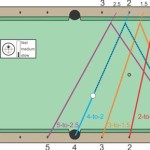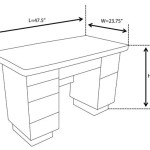Artificial Fruits and Vegetables: A Look at the Science, Applications, and Implications
The concept of artificial fruits and vegetables, often conjuring images of futuristic food production, encompasses a wide range of technologies and research areas. It extends beyond mere imitations of naturally grown produce and delves into innovative approaches to address food security challenges, enhance nutritional profiles, and explore novel food experiences. This article will explore the scientific underpinnings, potential applications, and broader implications of artificial fruits and vegetables, emphasizing the technologies that contribute to their development and the considerations that surround their integration into the food system.
Broadly defined, artificial fruits and vegetables can refer to several distinct categories. These include plant-based meat alternatives engineered to mimic the texture and taste of meat products, cellular agriculture aiming to cultivate plant tissues in bioreactors, and genetically modified organisms (GMOs) designed for enhanced yield, nutritional content, or resistance to pests and diseases. Furthermore, sophisticated techniques such as hydroponics and vertical farming, while reliant on natural plant biology, offer a degree of control over the growth environment that blurs the line between natural and artificial production. Each of these approaches presents unique opportunities and challenges in the pursuit of sustainable and accessible food sources.
Understanding Plant-Based Alternatives
Plant-based meat alternatives represent a significant segment of the artificial fruit and vegetables landscape, particularly in the imitation of meat-like products. These alternatives primarily rely on plant proteins extracted from sources such as soybeans, peas, and wheat. The manufacturing process involves texturizing these proteins to create a fibrous structure that resembles muscle tissue. This is often achieved through processes like extrusion, which forces the protein mixture through a die to create strands or sheets with a meat-like consistency.
Flavor and aroma components are crucial for replicating the sensory experience of animal products. Manufacturers employ various techniques to achieve this, including the incorporation of vegetable oils, spices, and natural flavorings. Heme, a molecule found in animal blood, is also sometimes added to plant-based burgers to impart a more authentic meaty flavor. The formulation of plant-based alternatives often involves a careful balance of ingredients to mimic not only the taste and texture but also the nutritional profile of conventional meat.
The production of plant-based meat alternatives raises questions about sustainability and resource utilization. While often presented as more environmentally friendly than traditional animal agriculture, their impact depends on factors such as the sourcing of plant proteins, the energy consumption of the manufacturing process, and the transportation and packaging involved. A comprehensive life cycle assessment is necessary to accurately evaluate the environmental footprint of specific plant-based products.
Exploring Cellular Agriculture: Growing Plants in the Lab
Cellular agriculture, also known as cultivated agriculture, takes a markedly different approach by aiming to produce plant tissues directly from cell cultures. This technology eliminates the need for traditional farming practices, promising a more controlled and potentially more efficient method of food production. The process typically begins with the extraction of cells from a plant of interest. These cells are then cultured in a bioreactor, a controlled environment that provides the necessary nutrients, growth factors, and environmental conditions for cell proliferation.
One of the key challenges in cellular agriculture is scaling up production to commercially viable levels. Bioreactors need to be large enough to produce significant quantities of plant tissue, and the culture medium needs to be cost-effective and sustainable. Furthermore, the resulting plant tissue needs to be structured and differentiated in a way that resembles the natural plant part. Researchers are exploring various techniques to achieve this, including the use of scaffolding materials to provide structural support and the manipulation of environmental cues to guide cell differentiation.
Cellular agriculture also offers the potential to create novel food products with enhanced nutritional profiles. By manipulating the culture medium, researchers can influence the composition of the plant tissue, increasing the levels of vitamins, minerals, or other beneficial compounds. This technology could also be used to produce plant-based ingredients with unique flavors or textures, opening up new possibilities for food innovation. The development of this technology, however, faces regulatory challenges and public acceptance hurdles before it can become a widespread reality.
Genetic Modification: Enhancing Natural Produce
Genetically modified organisms (GMOs) represent another form of artificial fruit and vegetable production. GMOs are created by altering the genetic material of a plant to introduce desirable traits, such as increased yield, pest resistance, or enhanced nutritional content. This is typically achieved through genetic engineering techniques that involve inserting specific genes from other organisms into the plant's genome.
The use of GMOs in agriculture is a subject of ongoing debate. Proponents argue that GMOs can contribute to increased food production, reduced pesticide use, and improved nutritional outcomes. For example, crops genetically engineered to resist insect pests can reduce the need for insecticide applications, benefiting both farmers and the environment. Golden Rice, a genetically modified variety of rice enriched with beta-carotene, is another example of a GMO designed to address nutritional deficiencies in developing countries.
Opponents of GMOs raise concerns about potential risks to human health and the environment. These concerns include the potential for allergenicity, the development of herbicide-resistant weeds, and the impact on biodiversity. Rigorous testing and regulation are essential to ensure the safety of GMOs and to address these concerns. Transparency in labeling and clear communication about the benefits and risks of GMOs are also crucial for building public trust.
Hydroponics and vertical farming, while not involving genetic modification, represent advancements in agricultural techniques that allow for greater control over the growing environment. Hydroponics involves growing plants without soil, using nutrient-rich water solutions. Vertical farming takes this concept a step further by stacking plants in vertically layered structures, maximizing space utilization and allowing for year-round crop production.
These technologies offer several advantages, including reduced water consumption, lower pesticide use, and the ability to grow crops in urban areas. Hydroponics and vertical farming can also improve the quality and consistency of produce, as the growing environment can be carefully controlled to optimize plant growth. However, these systems can be energy-intensive, requiring artificial lighting and climate control. The economic viability of hydroponics and vertical farming depends on factors such as energy costs, labor requirements, and the market demand for locally grown produce.
The future of artificial fruits and vegetables is likely to involve a convergence of these different technologies. Plant-based alternatives will continue to evolve, offering increasingly realistic and nutritious options for consumers. Cellular agriculture has the potential to revolutionize food production, but significant technological and regulatory hurdles remain. GMOs will likely continue to play a role in agriculture, with ongoing efforts to develop crops that are more resilient, nutritious, and sustainable. Hydroponics and vertical farming will become increasingly important in urban areas, providing access to fresh produce and reducing the environmental impact of food transportation. Ultimately, the goal is to create a food system that is more sustainable, equitable, and resilient in the face of global challenges.

Ludlz Fake Fruit Artificial Realistic Lifelike Decorative Foam Fruits Vegetables 1pcs Apple Banana Orange Lemon Photography Prop Home Decor Hand Made Com

Lifelike Artificial Plastic Fruit Vegetables Kitchen Home Display Party Decor

Fruit Fruits Fake Model Vegetable Artificial Lifelike Props Set Foods Simulation Faux Decor False Home Toys Vegetables Com

8 Pcs String Artificial Fruits And Vegetables Simulation Fake Plastic Foam Hanging Home Garden Wedding Party Decoration Wish

Artificial Fruit And Vegetables Fake Plastic Lifelike Display Home Decors

Fruit Home Decoration Simulation Artificial Temu

Steger Artificial Fruit Fake Realistic Decoration Lifelike Decorative Fruits For Home Kitchen Party Decor Com

Fruitvegetable Model Artificial Fruit Simulation Fruits Temu

1 Artificial Fruit Plastic Fake Variety Food Lifelike Home Kitchen Display Decor

Williamsburg Faux Fruit Basket Arrangement Artificial Centerpiece Food Dining Table In 2024 Fake Decor Centerpieces Arrangements
Related Posts








